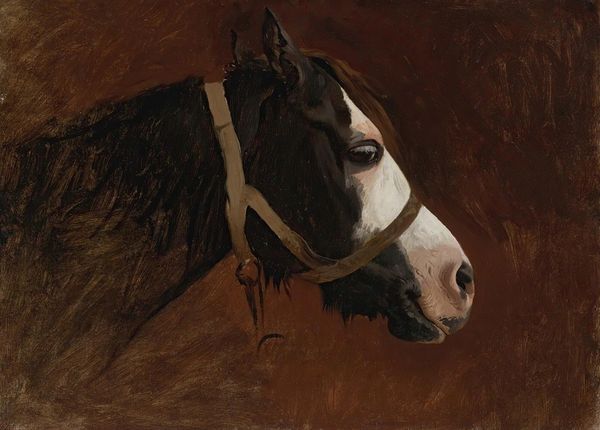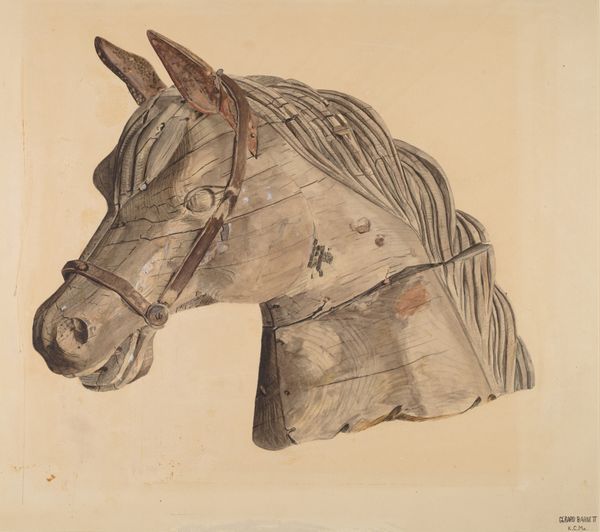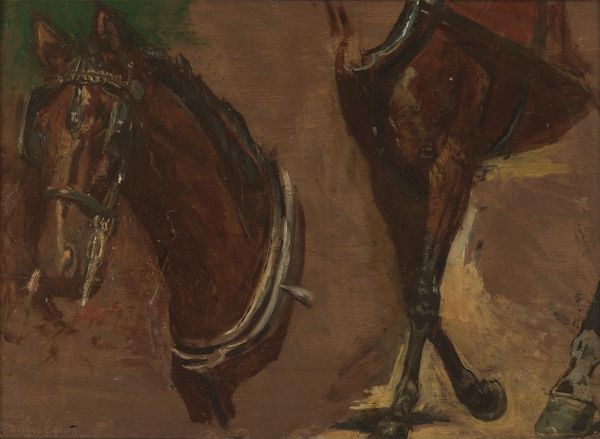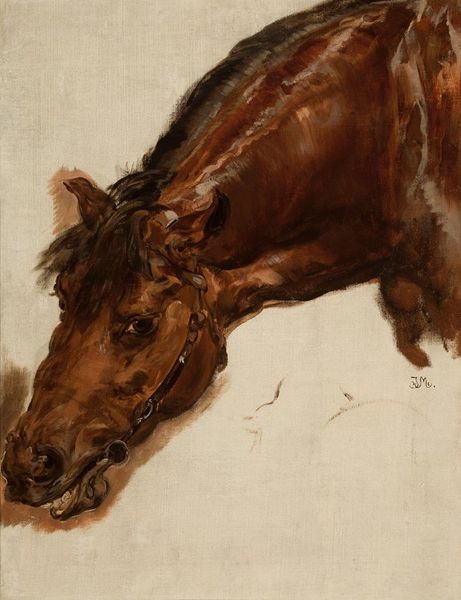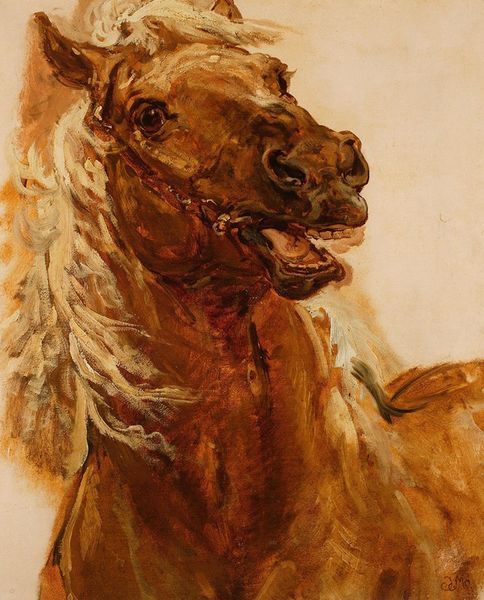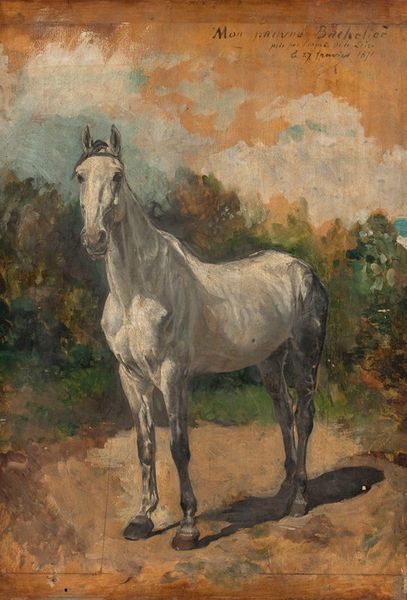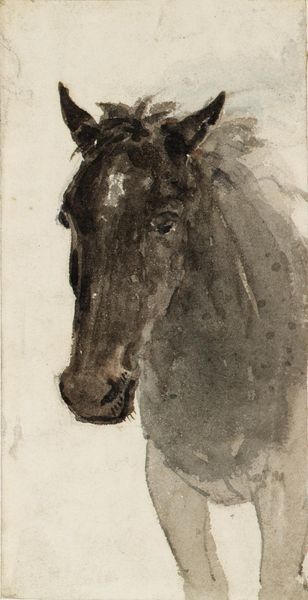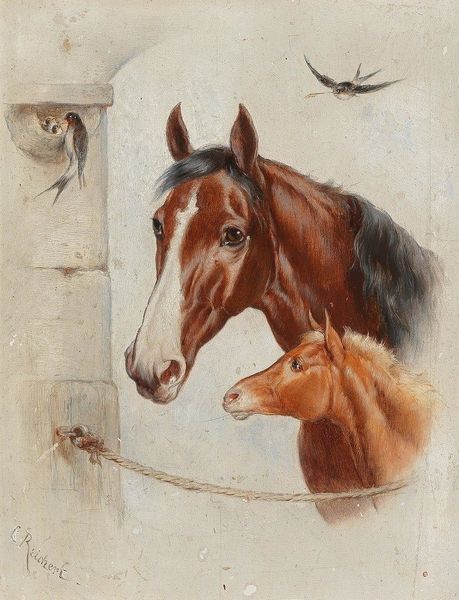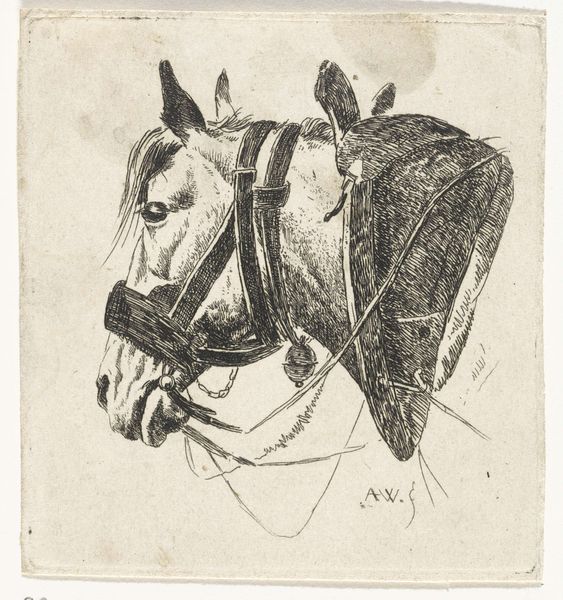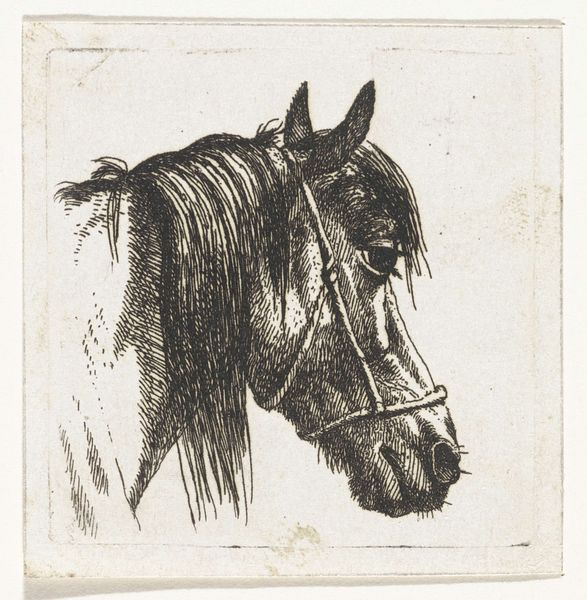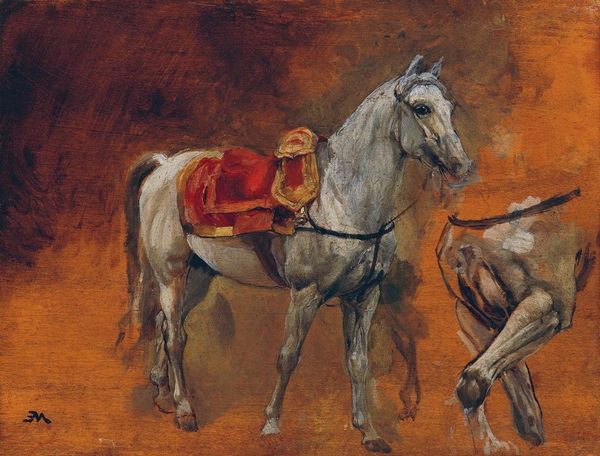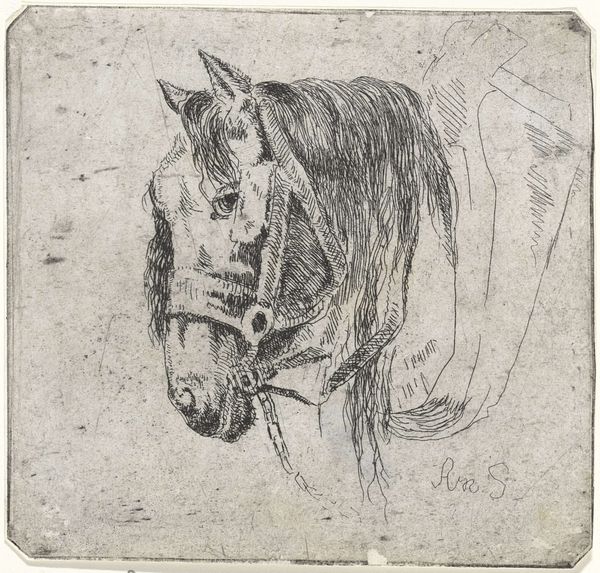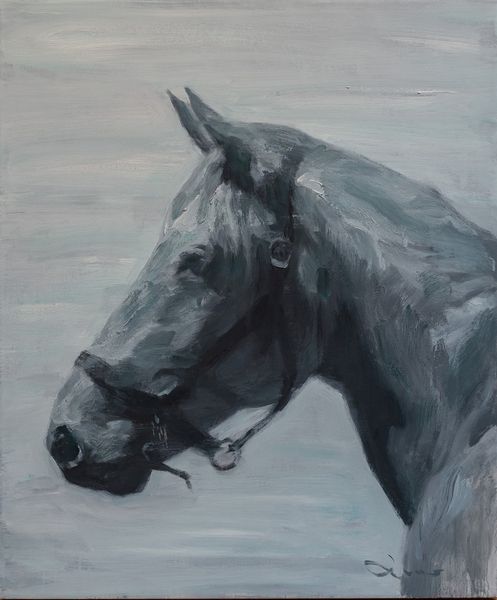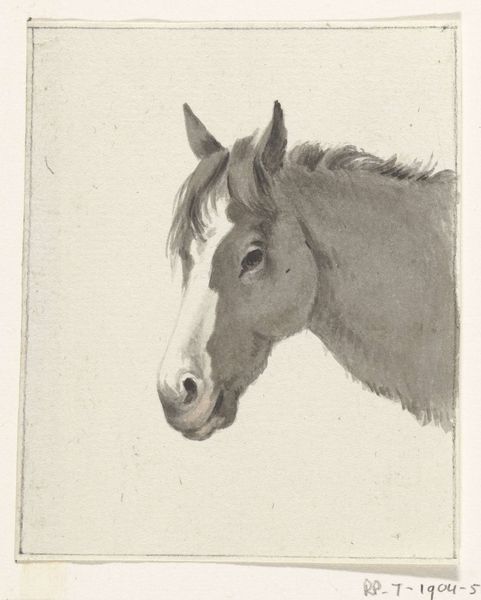
oil-paint, impasto
#
portrait
#
oil-paint
#
charcoal drawing
#
oil painting
#
impasto
#
charcoal
#
realism
Copyright: Public Domain: Artvee
Curator: Look closely at this work from 1881. It's entitled "Paardekop," or "Horse's Head," by Richard Nicolaüs Roland Holst. Editor: Immediately, I'm struck by the muted palette, the restrained energy held within those dark tones, the heavy brushstrokes adding palpable weight and texture to the subject. It's far from decorative, this portrait. Curator: Precisely. The artist’s realism isn’t just about depicting a horse. It seems to probe deeper, touching upon labor, societal structures of rural life, and humanity's relationship with animals, especially in the late 19th century. Horses as workers. Editor: Absolutely. The impasto technique is also quite evident. Look at the tactile application of paint. This materiality affects perception because we can really see the individual gestures and build up a sense of movement frozen in place. The almost monochrome shades contribute a severity to its expression. Curator: Furthermore, Roland Holst existed at a crucial juncture where art responded to shifts in Dutch political and economic realities. Considering that Roland Holst later engaged socialist ideas through his artworks, how might "Paardekop" hint at nascent themes in his thinking about society, labor, and power dynamics? Editor: Interesting point. One might decode the tight bridle as symbolic of enforced labor. But, moving away from symbolism to brushstrokes, notice how light is almost sculpted on its form. The painter guides you in almost theatrical terms as light catches only certain details that further reinforce the weight and somber quality of the beast’s form. Curator: I'm glad you pointed out the use of light and dark; it highlights not only artistic expertise but potentially reflects on late nineteenth century anxieties, an increasing sentiment echoing from rural to industrial societies. I view it now with much deeper consideration of socio-political turbulence simmering in society at this point in time. Editor: A fitting example then of an artistic statement, that captures through very subtle articulation the zeitgeist it came from. I have certainly moved from my immediate perception to an enriched engagement with Roland Holst's methods, material uses and subject positioning!
Comments
No comments
Be the first to comment and join the conversation on the ultimate creative platform.
